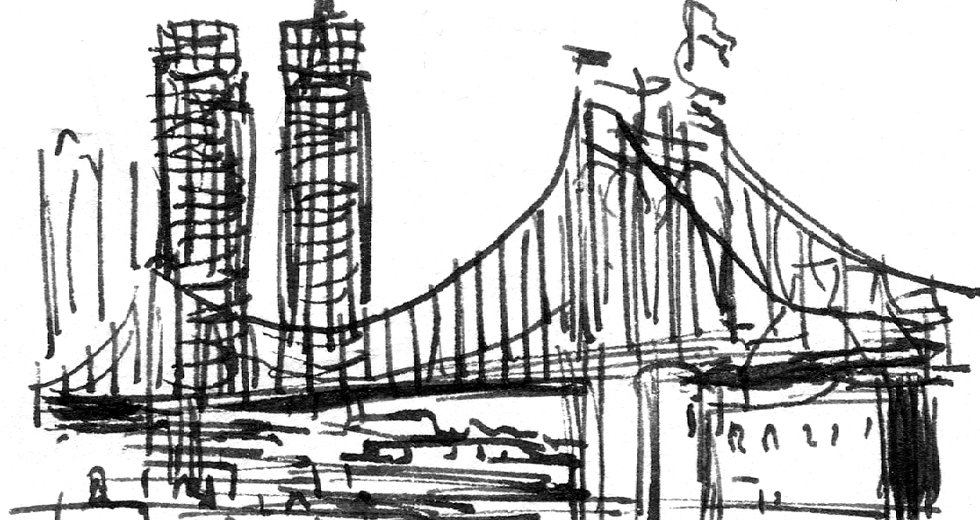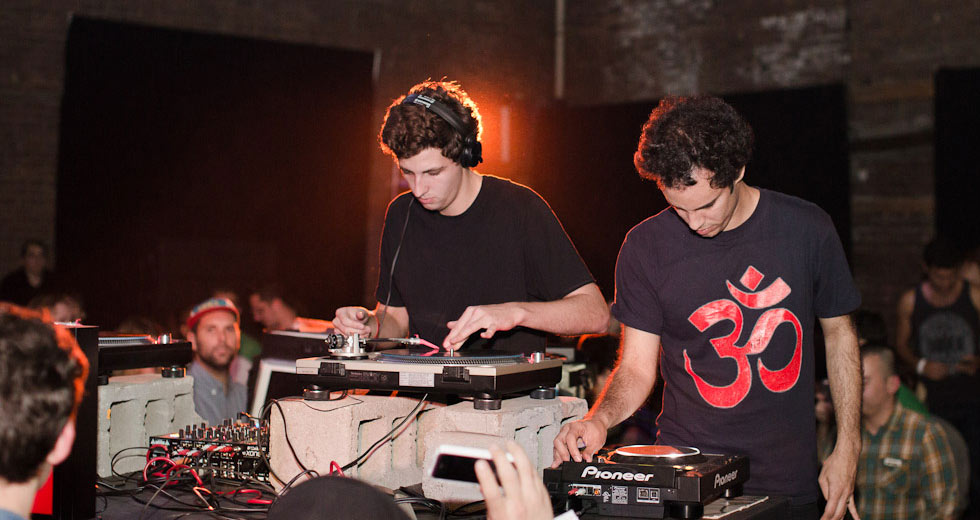Dark Days: The Ominous Sounds of NYC
It was the worst of times, it was the worst of times. Living in New York is never easy, but 2008 was particularly gnarly. In the midst of possibly the worst financial crisis since the Great Depression, people were losing jobs left and right. The rent, as mayoral candidate Jimmy McMillan reminded everyone, was too damn high. And it still is. There was a mass exodus of artists, musicians and writers – anyone in a creative profession, really – and real-estate moguls literally wandered the streets of Williamsburg, Greenpoint and Bushwick looking for buildings to buy and lots to loft.
And the music wasn’t that hot either. Rock was dominated by half-baked garage and a horde of happy, jangly indie bands that were nearly indistinguishable from one another. Dance music, still reeling from the hangover of mash-ups and blog house, was a pit of electro-house excess, classic disco rip-offs and bad bar DJs aping Diplo. Hip hop was saying... Well, next to nothing new. By the time the apocalypse movie 2012 was released in November 2009, pounding $8.00 PBRs to the sounds of Kanye and Hot Chip had started to feel pretty empty indeed.
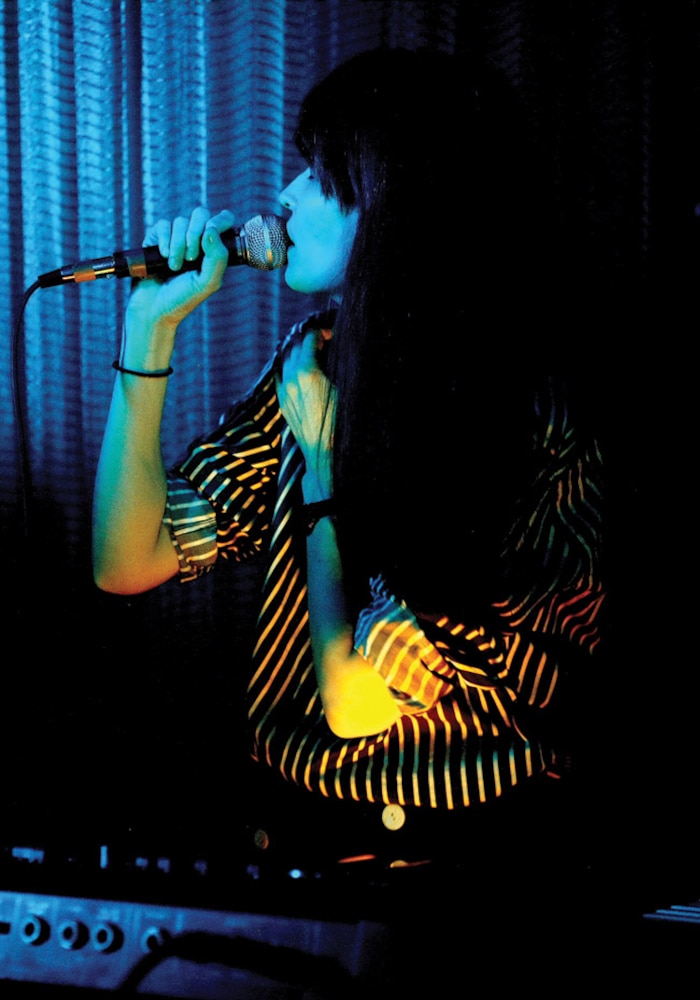
But seeds of musical unrest had already been sown and were germinating in bedrooms and practice spaces, in dimly lit basements and dank Brooklyn warehouses, many so filthy and fire-hazardous they seemed purpose-built for listening to music on the edge. Bands like Light Asylum, Cult of Youth, Xeno & Oaklander, and Led Er Est were revisiting their old Cure, Coil and Cabaret Voltaire records and getting inspired to create fresh dynamics of darkness and shade. Labels like Dais, Sacred Bones and Veronica Vasicka’s Minimal Wave had begun creating connections between the goth/industrial, minimal synth and experimental punk of the past and the darkly hued underground of the present day. Meanwhile, events like the Brooklyn techno party the Bunker, the Pendu label’s Pendu Disco and Wierd Records’ Wednesday weekly became sanctuaries for those looking to dance to sounds that were dark, psychedelic, cold, melancholy, occult or simply different.
“I moved here at a really crazy time and people weren’t really going out,” recalls Shannon Funchess, frontwoman of the modern industrial duo Light Asylum, who arrived in New York in 2001 from Seattle. “The nightlife had basically been halted with Giuliani shutting every nightclub. I moved here three days after the World Trade Center bombing and everyone had the fear of going out and breathing toxic air. It wasn’t the New York I had planned to move to. I spent a lot of time figuring out how to survive and not turn around and run home with my tail between my legs.”
People were like, “Oh shit, this candy stuff, this totally bright stuff, is not really meshing with my financial situation.”
After turns lending the powerful, androgynous boom of her vocals to bands like Telepathe and !!!, Funchess began writing songs on the side, inspired by a lifelong obsession with goth and industrial bands like Siouxsie and the Banshees and Front 242. Teaming up with synth enthusiast Bruno Coviello, they launched Light Asylum in 2009, at a time when many other similarly minded bands were also beginning to surface. “It might have been the bleakness of the eight years of the Bush administration,” she says, musing on the collective consciousness fading to black. “And there was the downturn in the music industry, as far as record sales and artist signings and the Internet age. Whereas before I think people were trying to be the next Yeah Yeah Yeahs or the next indie thing out of Brooklyn, I think people realized they should be making the music they should have been making all along, and that included electronic music on the darker side.”
“In terms of dark music being a trend in New York, you could see it really happening around about 2007 and 2008,” explains Patrik North. “People were like, ‘Oh shit, this candy stuff, this totally bright stuff, is not really meshing with my financial situation,’ because of course the recession had really started to kick into gear then.” North is a Canadian transplant and the label owner of Acéphale Records, currently home to Pitchfork favorites like How to Dress Well and Korallreven. In 2008, though, he was either a demon or a saint (depending on who you asked) for discovering and releasing Salem, a trio of drug-fried Midwestern art-school kids who mixed goth, chopped ’n’ screwed Southern rap, and Chicago juke with an at-times terrifyingly dark and demented aesthetic. Acéphale’s first release was Salem’s Yes, I Smoke Crack EP in July 2008.
“I was living in Montréal when I first found Salem, who were in New York at that point,” recalls North. “Salem, to me, was the sound of the coming economic crash. Gas prices were going crazy; it was a really apocalyptic time. The fact that they were originally from Michigan was perfect, because it was like the sound of the Rust Belt and American decay and all this stuff.” Salem eventually got burned at the stake for being the poster children of “witch house,” a nu-goth niche that became more about a fashion for upside-down crosses and Zapf Dingbats-level occult symbology than musical longevity. But for a brief, incandescent moment, they were a portal into an otherwordly space that sounded like Passion Pit’s worst nightmares.
Things only got darker in the coming months. “Nothing is fun right now,” DJ Venus X would opine to the Opening Ceremony blog in October 2011, as crepuscular fashion and musical vibes had begun infiltrating the mainstream. “Everything is really evil and dark. There’s a recession, the world is coming to an end and people are kinda scared. So the music should be the same.” The mastermind behind the GHE20G0TH1K parties, which marry a gothic aesthetic with raw forms of bass music, Venus is ultimately one of the few who has openly copped to purposely doing something “goth” — perhaps because she and the other GHE20G0TH1K residents do not originate from that subculture to begin with.
“Goth” is the elephant in the room in this conversation. No one wants to use the word, though the one thing 90% of the people in this article have in common is being inspired by bands like Bauhaus, Psychic TV, and Clock DVA, alongside classic dark New York acts such as Suicide and Swans. No one wants to claim membership in a scene, especially not one whose modern incarnation brings to mind terrible trance bands, hot-ironed hair and Hot Topic. “We don’t use the term goth,” Pieter Schoolwerth of Wierd explained to Vice in 2007. “It has a derogatory connotation. It’s degenerated into some kind of ironic B-horror-film thing. It’s lost its elegance, sophistication and, most importantly, its pretentiousness.”
We’re not interested in putting out your goth band. It’s too... base and obvious. We don’t want to be that stereotype.
“I still love Bauhaus and all the stuff I learned about in my formative years,” says Sacred Bones label manager Taylor Brode. “I think Caleb [Braaten, Sacred Bones’ owner] feels the same way. At the same time, I think that goth has reached this apex in Brooklyn and London and some other places, where the resurgence of it is a bit off-putting to both of us. We’re not interested in putting out your goth band. It’s too... Base and obvious. We don’t want to be that stereotype.”
“We don’t go, ‘Alright, we’re gonna find the scariest shit,’” concurs Braaten. “It’s just what we’re into. Townes Van Zandt is darker than anything that we’ve ever put out, and he’s a folk singer.” Though their biggest success story so far has been releasing Wisconsin’s ethereal diva Zola Jesus, Sacred Bones has also reissued the soundtrack to David Lynch’s Eraserhead, worked with Foetus’ JG Thirlwell and filmmaker Jim Jarmusch, and released a series of brooding and enigmatic recordings from the local bands like Blank Dogs, Led Er Est and Pop.1280.
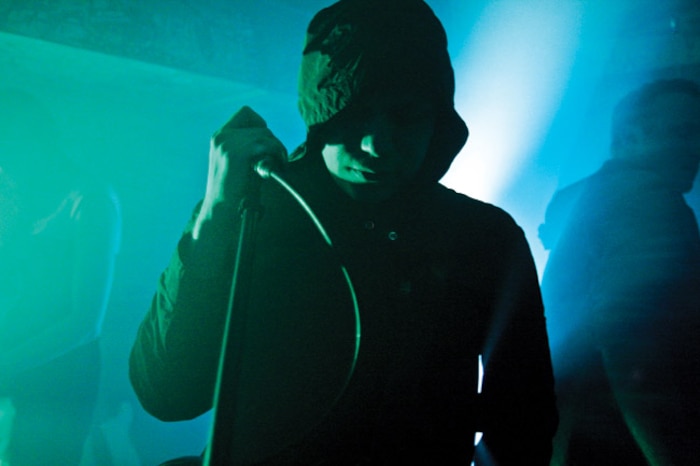
Sacred Bones may currently share a sunny office space in Greenpoint with the labels Mexican Summer and Captured Tracks (owned by Blank Dogs’ Mike Sniper), but it wasn’t always this idyllic. For the first four years of the label’s existence, it operated out of the dank, dusty basement of Academy Records on North 6th Street in Williamsburg. In many ways, the sound of early Sacred Bones releases evokes the dark corners of this cramped underbelly.
“You would walk down these rickety old stairs and as soon as you got to the bottom, there would be piles of discarded children’s toys and broken baby carriages and cribs and stuff,” explains Braaten, who could pass for a sepia-toned photo of a turn-of-the-century undertaker. “Ultimately, it was very harmless but it looked very frightening.” “It looked like a pedophile hang spot,” concurs Brode with a wry smile. “It was cool to bring people down there and [they’d] be like, ‘Whoa, what is this?’ But it wasn’t always great to be there. It was cold all year round. No windows. It was an old meatpacking place so it was a big freezer at one time. There may have been a rat or two.”
“Everything is based on the fact that nobody can really afford to be here,” says Sean Ragon of Cult of Youth, a punk from Boston who moved to New York in 2001 because he wanted more from life than his “shitty pizza job.” Cult of Youth has released records on Dais and Sacred Bones and played at Wierd, and Ragon stocks everything from Sandwell District and Autechre to local punk 7-inches at his Heaven Street record store in Bushwick, which makes him sort of an accidental ambassador for this scene-not-scene.
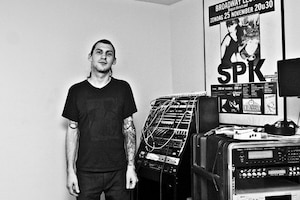
“In a way, I think [the atmosphere of New York City] makes some people work harder with their creative endeavors. They have so little just to give to it and have to fight so hard for a resource of any sort, like to have a practice space that maybe they can only go in for a few hours a week and they share with ten other bands, that they put a lot into it. I think there is a sense of desperation. In a way, it does probably create a certain type of sound because everybody’s just terrified of the fact that they’re always teetering on the edge of failure. But I don’t think that’s a healthy way to live, and I don’t think that’s a good environment for homo sapiens. I think it’s terrifying and bad and I do not recommend it.”
Ragon, who, in addition to Heaven Street, also runs the Blind Prophet record label, has a comfortable relationship with the melancholy and despair that he channels into Cult of Youth, a project whose intense look and enigmatic music (dark yet oddly hopeful) is inspired by martial industrial sounds and Death in June-style neo-folk. “New York is a night culture and it’s a club culture, but part of that is because nobody has any space,” he says. “In other places where creative endeavors aren’t regulated to either an art gallery environment, which is just centered around money, or a bar environment, which is centered around alcohol, I think they can express themselves in different ways. It does make things a little bit more nihilistic here because behind every creative endeavor is something inherently evil – either the financial aspect of the art world or the self-destructive reality of nightlife.”
Not everyone is sad or depressed here, but many are, and you can see it in their expressions. They are tired, hungry, talking to themselves, crying openly.
“I find that New York is the perfect place to get into some ‘dark’ stuff and not just music,” concurs Bonnie Baxter, who makes haunted, spacey beats as Shadowbox. “It may not be as gritty as NYC in the ’70s through the ’90s, but it’s still got some grit. Nowadays you have to hustle to live here,” she continues. “Not everyone is sad or depressed here, but many are, and you can see it in their expressions – they are tired, hungry, talking to themselves, crying openly. These people aren’t crazy, there are just so many people around they don’t think anyone is looking. New York is an amazing place to live but it’s not an easy place to live. It can create some angst in music for sure.”
Though she doesn’t feel connected to any particular scene, Baxter recalls being inspired by the dark energy of events at renegade underground spaces, many promoted by Todd P. “When I first moved here, DIY shows at places like Silent Barn, Market Hotel, Death by Audio or just someone’s random basement were crazy and the grimiest shit I’ve ever stumbled upon: blood, puke, PCP episodes, people lighting themselves on fire. So it’s not like some ‘dark movement’ just started happening.”
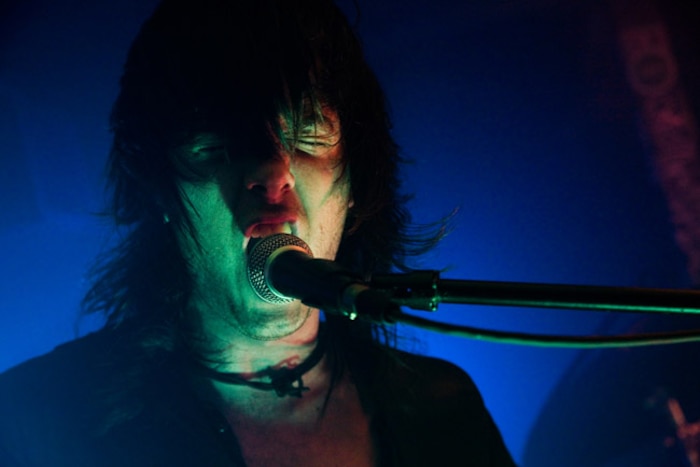
As far as events go, few have done more in the last few years to foster a scene around dark and experimental music than Pieter Schoolwerth. In 2003, Schoolwerth began brewing a cabal under the umbrella of Wierd, a weekly party and record label. Originally launched at a dive bar in the shadow of the Williamsburg Bridge, the Wierd party moved to Home Sweet Home on the edge of Chinatown in late 2006, and became a lively weekly meeting place for bands, fans and freaks of the minimal synth, goth/industrial, noise and punk persuasion. “There is less public space where one can feel as free as old, triumphantly seedy and dangerous NYC,” Schoolwerth told Bomblog last year. “I hope Wierd can be one of these safe havens in the night.” In a long, skinny basement under a blanket of thick fog, Wierd hosted and inspired a dizzying array of DJs and bands – including Light Asylum, Zola Jesus, Psychic TV, The Chameleons and The Soft Moon – before shuttering its doors this February.
“Home Sweet Home, as a venue, grew to fit Wierd and Wierd grew to fit Home Sweet Home,” explains Soren Roi, a bartender at the club and a member of Røsenkøpf, who released their hypnotically drummy debut on Wierd Records last year. “Pieter finessed it all. Every little detail mattered to him so much. If one light bulb wasn’t working, he was not happy. His main thing was showcasing bands with integrity. He was trying to prove points about live performance; what a live performance is, who is actually playing ‘live’ as opposed to who has got everything backtracked or just pressing play on a laptop.”
People are going to be spiritual in a real sense instead of just dillydallying with it. I think the nihilism is going to fade.
Soren, along with photographer/bartender Nikki Sneakers, is behind Home Sweet Home’s new Wednesday night party Nothing Changes, which picks up the torch from Wierd but expands the palette. “What I think is interesting now is a lot of people that were raised in the punk scene are starting to do more electronic stuff, more hardware-based techno stuff. That’s what I would like to foster. In the scene I’m in, techno is the word that’s on everybody’s tongue. People are intrigued by it or they’re not intrigued by it, but having that polarity is important. Like with witch house, people were really into it or they fucking hated it. To a lot of people, to even say that you enjoyed a Salem song was like... They would pretty much slap you in the face. They were offended by it. But it’s always gonna be shifting and as a promoter it’s your job to allow those changes to happen, and to help them happen. Otherwise, you’re just going to have the same bands playing the same shit.”
If techno is currently on many people’s minds, Bryan Kasenic’s The Bunker parties have been connecting the genre back to its roots in synth-punk, experimental electronics and EBM. Kasenic has run the party since 2003, when techno was scarce in New York. The Bunker started in a basement below Tonic, a Lower East Side venue that was a hub for avant-garde downtown musicians like John Zorn and Bill Laswell. “We were trying to force the people who were coming to the dance party downstairs and the people who were coming for the more experimental music upstairs to intersect, but we really struggled,” remembers Kasenic. “We’d have a great crowd upstairs for Gang Gang Dance or Animal Collective or something and a great crowd downstairs for Daniel Bell. We would literally stand at the top of the stairs when the rock show was over and be like, ‘Everybody come downstairs! We’re not even going to charge you!’ And they’d be like, ‘Eh, techno...’”
Since moving to Public Assembly in 2007, The Bunker has continued to mix up what “techno party” means, perhaps now more than ever. A 2011 show with No Fun and Wierd paired Sandwell District’s moody techno warlock Silent Servant with minimal synth band Xeno & Oaklander and noise artist Carlos Giffoni, while the Bunker’s ten-year anniversary this January was headlined by Vatican Shadow, the melancholy techno project from noise/power-electronics demigod Dominick Fernow (whose cassettes Kasenic initially discovered while shopping at Fernow’s esoteric and now-defunct Hospital Productions record shop in the East Village). “I’m always trying to make a statement with the lineups for The Bunker,” says Kasenic. “I never throw together a random line-up or book some DJ only because I think they’re going to bring out a lot of people. But I think it has pretty consistently leaned toward the more psychedelic, strange side of electronic music. There’s definitely a dark streak that goes through as well, always. In my own mind anyway.”
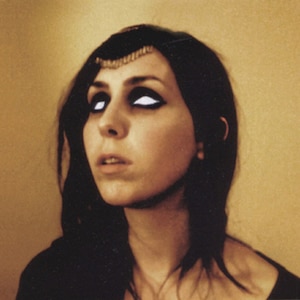
While dark sounds will never truly go out of style, some are predicting that 2013 will bring more light into the picture. “There’s a lot of positive stuff and people uniting who wouldn’t usually,” says Gadi Mizrahi of Wolf + Lamb, a DJ crew and record label once known for moody sounds and druggy all-night techno parties but has recently switched almost entirely to poppier and more positive strains of house music. “It just feels like we’ve passed some kind of energy crisis or something, and now it’s a brand-new palette.” “I don’t want to spend my energy pushing a dark feeling in this world,” concurs his Wolf + Lamb partner Zev Eisenberg. “I want to push positivity on every level we can.”
Hyper-colorful movements of late have been pushing against the darker edge.
Roi believes the dark aesthetic trends of the last couple years – with Satanic and occult imagery appearing on everything from record covers to t-shirts at Urban Outfitters – will fade, but not before predicating an actual shift in culture. “People are just so intrigued by those symbols, but what they’re really intrigued by is a deeper meaning. It’s like, ‘The world didn’t end, what happens now?’ The whole dark thing is just a safe way for a lot of people to experiment with God, or experiment with spirituality in a safe way where their friends aren’t gonna be like, ‘You’re a freak because you believe in something.’ That is actually going to fade and people are going to be spiritual in a real sense instead of just dillydallying with it. I think the nihilism is going to fade.”
“‘Pre-millennium tension’ is the key to timelines for when darker music is absorbed by a larger audience. It’s all about tension and release,” concludes Todd Pendu. From January 2010 through December 2011, he ran Pendu Disco, a series of “horror disco” parties that mixed up various strands of the scene; he continues to run the record label Pendu Sound, a cauldron of dark arts that includes artists Chelsea Wolfe, Mater Suspiria Vision and aTelecine. “A friend of mine and I joked back in 2009 that dark music was doing well because of all the hype around the apocalypse of 2012 but that, starting in 2013, we would probably have to start looking for other jobs since the apocalypse isn’t going to happen and people are going to want music that’s just fun and ridiculous,” he recounts. “We were somewhat right, I guess. I could also say that hyper-colorful movements of late have been pushing against the darker edge; even some who used to be a part of the ‘All Black Everything’ are now championing a return to ’90s rave aesthetics and such. But everything is in flux. Nothing stays the same, right? I’m okay with that.”
A version of this article appeared in The Daily Note, a free daily newspaper distributed in New York during the 2013 Red Bull Music Academy. Header photograph by Nikki Sneakers.
